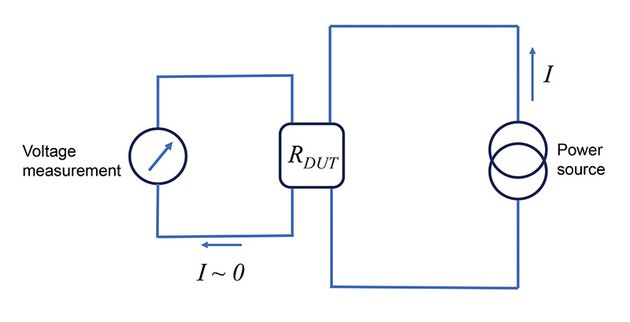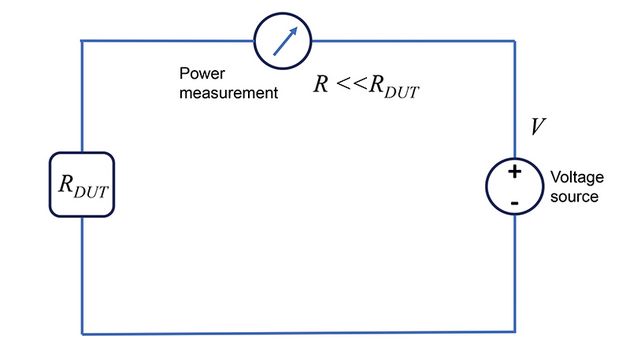Basics of electrical measurements Part 1 – The correct usage of currenct and voltage
This article is the start of a small series on the basics of electrical measurements. In this part, we will discuss the use of current and voltage.
The resistance R of a sample (also called DUT Device under Test) is given by the relation of voltage U and current I:
R = U/I
This well-known linear relation is called ohmic resistance or ohmic behavior. Therefore, to calculate resistance, you need to know the current and the voltage.
In practice, this is achieved by either presetting the voltage by using a Voltage Source (VS) and then measuring the current, or by using a Current Source (CS) to preset a certain current and then measuring the voltage. At a first (brief) glance, both procedures look similar or even the same. When looking closer, you can see the difference.
The general rule is: Use a current source and measure the voltage with small resistances. With high resistances (from 10 megohm), it is better to use a voltage source and measure the current.
With high-resistance samples, the cabling capacity comes into play. In this case, “loading” with voltage is quicker than using a current source. The advantage here is the measurement time. Another reason is the thermal noise of the current (voltage source setup). The current noise decreases with higher resistance – according to formula [1]. The thermal noise of the voltage increases with the current source setup with increasing resistance – see formula [2].
IRMS ~ √{1/R} [1]
URMS ~ √{R} [2]
Low-resistance samples can be LEDs, diodes, metals, alloys and superconductors (R=0). With these, it is useful to control the current. You want to create a current-voltage characteristic and apply several excitation points. When using a voltage source, the current could unintentionally increase severely, causing unwanted heating.
Whatever your samples require - the M81-SSM from Lake Shore will help you manage. M81 is a system family suited for both current source – voltage measurement and voltage source – current measurement. This flexibility is a result of the M81’s modular concept. Contact us to learn more about its many features.
Current source – voltage measurement
- Small and medium resistances
- Controlled current
- Thereby control of heating
- Low noise in the measured voltage
Voltage source – current measurement
- High resistances (>10 megaohm)
- Low impact of cabling or sample capacity
- Low noise in measured current





